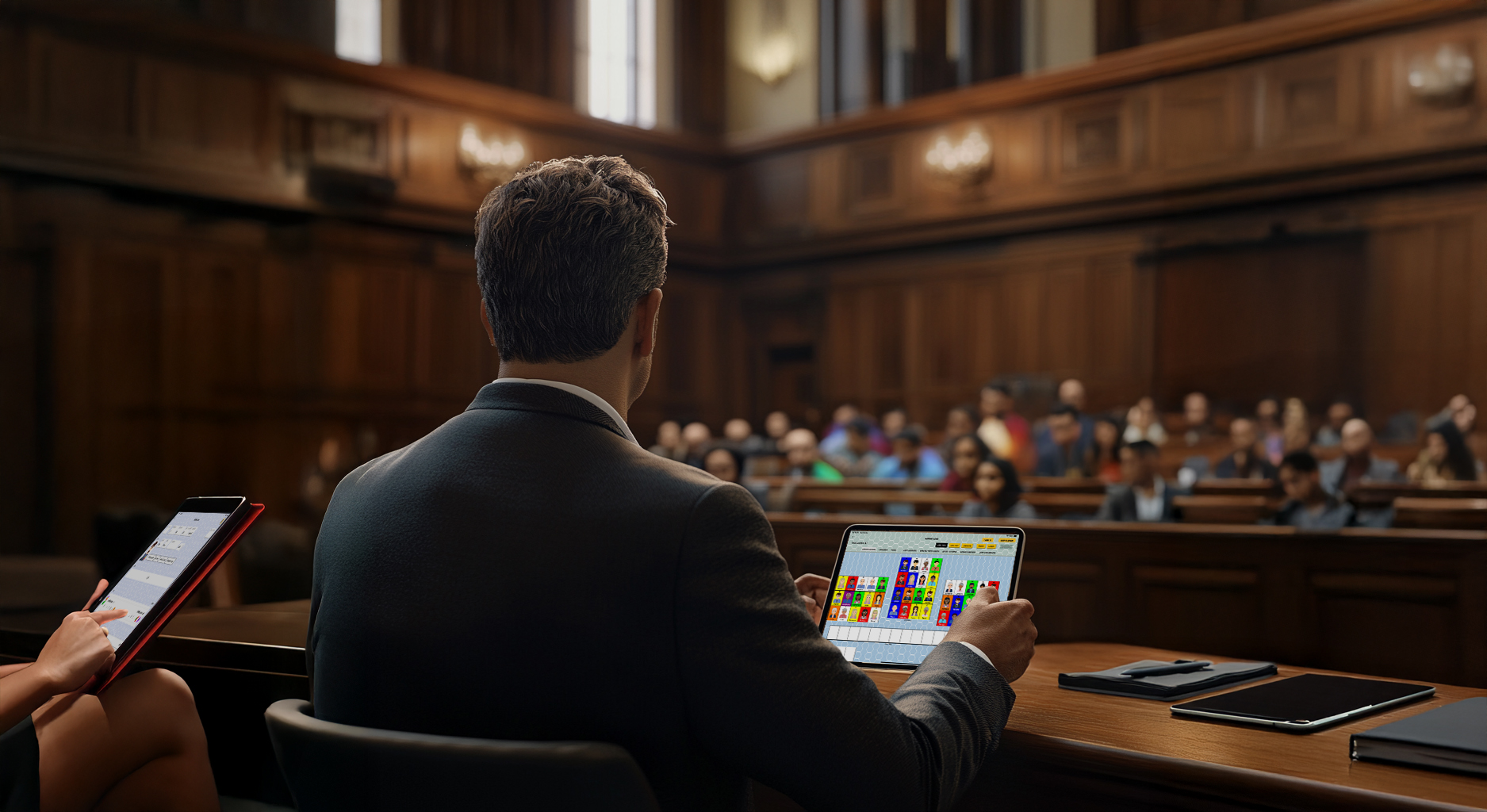Tips and Tricks for Effective Communication
Best Practices – Using a Team Approach
Selecting a jury alone is like navigating a maze blindfolded—it’s a recipe for disaster. As trial lawyers, our goal is to communicate effectively while building rapport with our audience: the jurors. Imagine trying to connect with your audience while juggling notes. It’s impossible, right? This is why a team approach is essential.
Think of it like this: You’re the lead singer of a band, and your team is your backup. While you focus on hitting the right notes with the jurors, your team handles the background tasks, ensuring everything runs smoothly. This way, you build rapport and trust with the jurors without missing a beat.
Let’s dive into why having a team is crucial for jury selection. Having an extra set of eyes and ears taking notes ensures that you capture all the vital information from the jury panel. This allows you to focus on truly connecting and communicating with the jurors. And if you have two or three assistants, even better! You’ll collect and record more information than one person alone could handle.
Technology has revolutionized jury selection. No more scribbled notes, disorganized charts, or sticky notes. Modern tech allows your team to collaborate on a cloud-based platform, ensuring organized, essential information is recorded, measured, and analyzed efficiently.
Communication is the key tool for an outstanding jury selection. This communication isn’t just between the attorney and the jurors but also within the team. Everyone needs to be in sync, understanding which jurors are your best bet and which are potential problems.
The traditional method of selecting jurors can be quite chaotic, with huddles, whispered conversations, and flipping through pages. In contrast, the modern approach utilizes technology to facilitate smooth communication, structured notes, consistent assessments of jurors, and silent text messaging among team members.
Additionally, technology helps you with color-coding to identify which jurors have already stated cause and don’t need additional questioning. This saves time and lets you focus on the jurors who might be undesirable for your case but haven’t yet provided grounds for a peremptory challenge.
Technology is making juror selection more efficient for clients. By collecting detailed notes, pinpointing important issues, and recording specific significant situations, the accuracy of challenges can be enhanced. Old methods such as seating charts, paper notes, sticky notes, and colored markers are being phased out.
Think about the impression you make on the jury. They see a trial team coolly, calmly collecting notes and discussing selections, versus a team flipping through notes and whispering frantically. The difference is night and day.
All in all, technology is the key to great jury selection. Your client deserves every advantage in the courtroom to get their day of justice.
Tips for Effective Communication During a Trial
- Build Rapport: Connect with your jurors from the start. Smile, maintain eye contact, and be sincere.
- Use Clear Language: Avoid legal jargon. Speak in plain language that everyone can understand.
- Tell a Story: People love stories. Frame your arguments as a narrative that jurors can relate to.
- Be Honest: Always be truthful. Jurors can sense when something feels off, and it can damage your credibility.
- Listen Actively: Pay attention to the jurors’ reactions. Adjust your approach based on their feedback.
By following these tips and leveraging technology, you increase your chances of winning your trial and ensuring justice for your client. Happy jury selecting!

